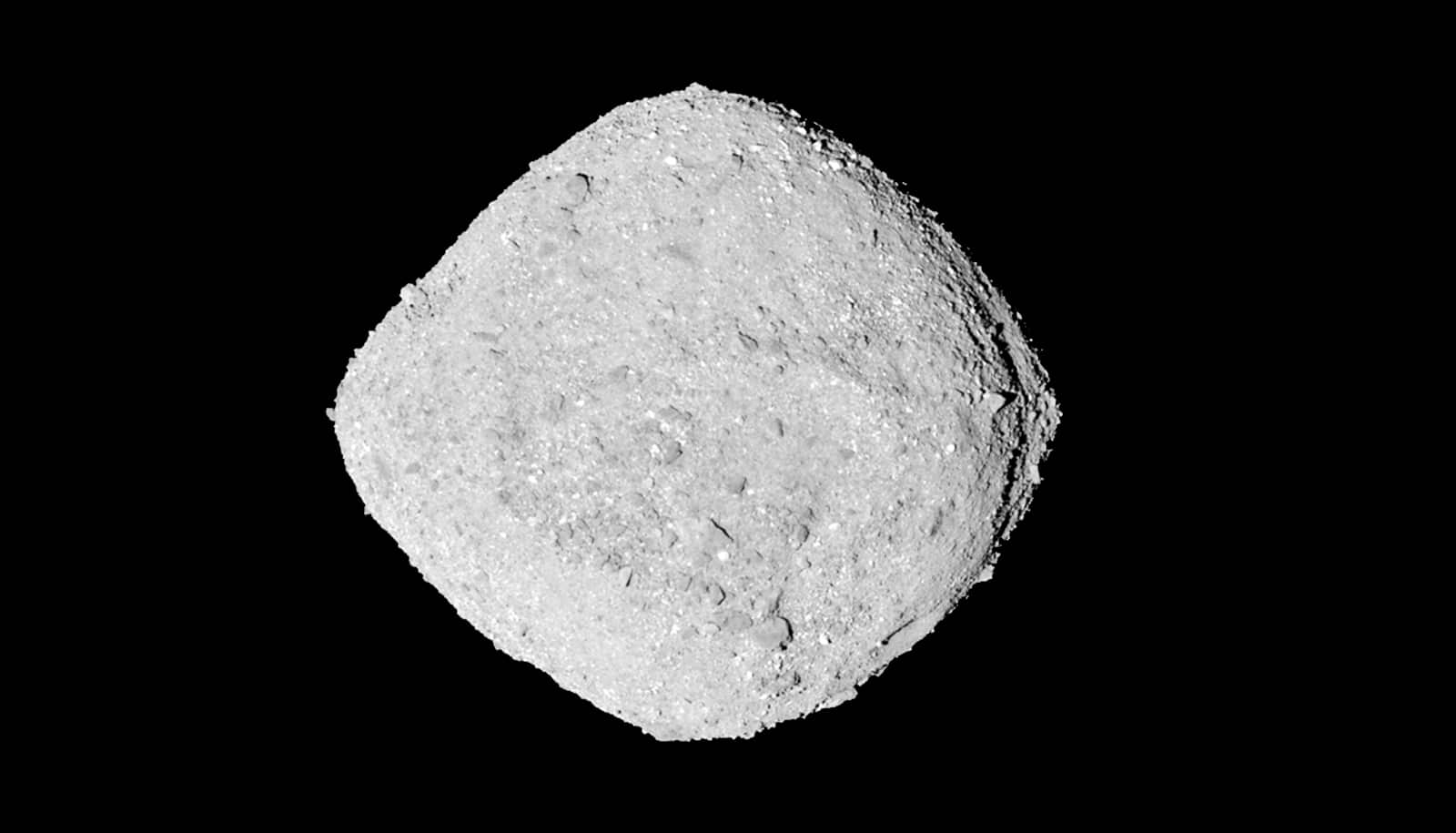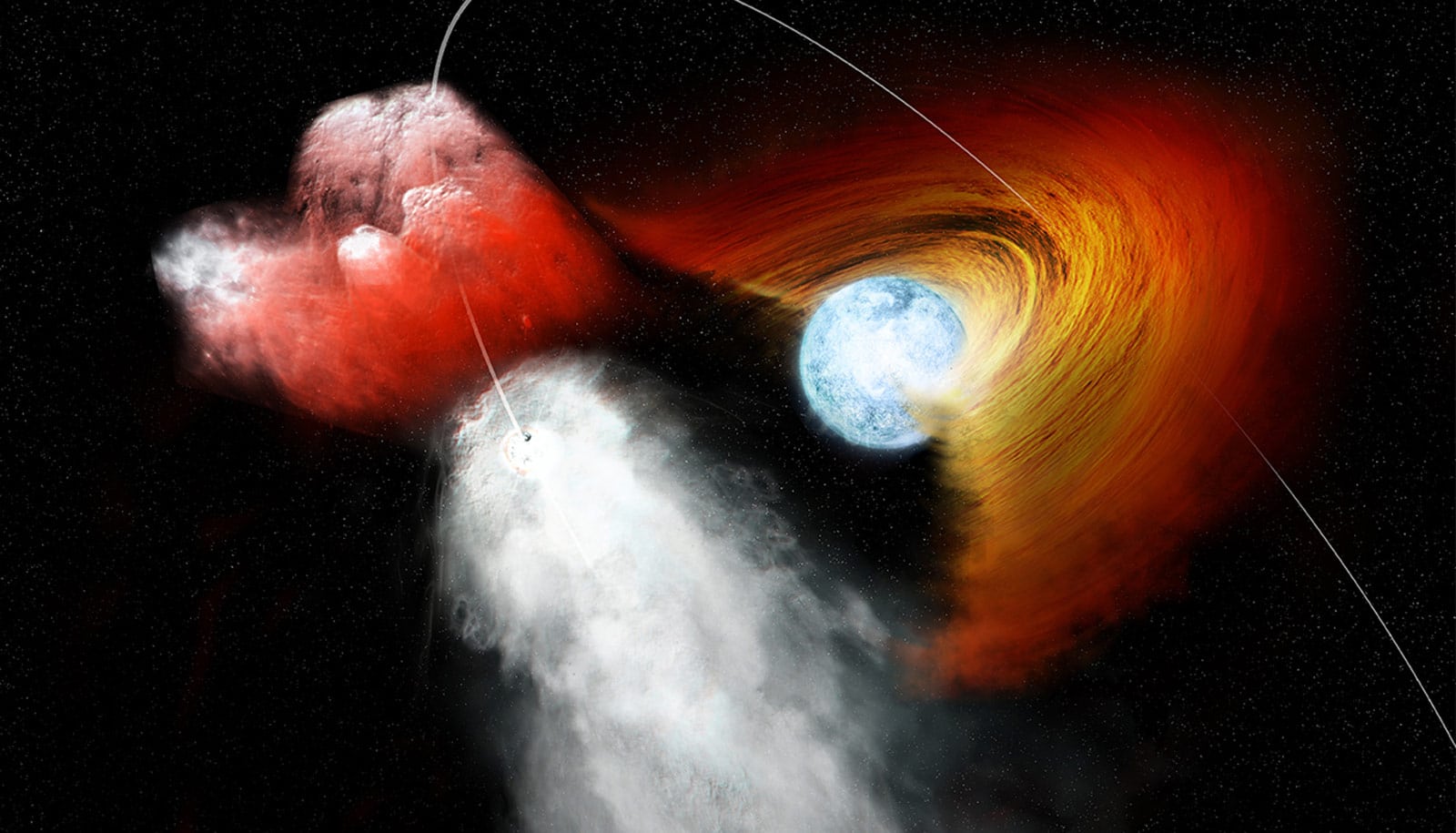The OSIRIS-REx spacecraft’s first up-close observations of its target, the asteroid Bennu, suggest it poses a bigger challenge than mission engineers and scientists thought.
While the spacecraft’s observations confirm many of the measurements obtained by ground-based observations, Bennu turns out to be a more challenging target than what the mission was originally designed for. Its surface is rougher and more varied in brightness than expected, prompting mission engineers and scientists to re-evaluate some of the approaches designed around the mission’s primary goal: collecting a sample of surface material, or regolith, and returning it to Earth in 2023.
“Despite these newly found challenges, our team is confident that we will meet the science objectives,” says Dante Lauretta, OSIRIS-REx principal investigator and professor of planetary science at the University of Arizona’s Lunar and Planetary Laboratory. “The OSIRIS-REx team designed the mission with flexibility and capabilities to deal with the unknown, and we are prepared to answer the challenges Bennu has given us.”
Coinciding with these publications, mission members presented some of the findings made by the spacecraft upon arrival at the asteroid at the 50th Lunar and Planetary Sciences Conference in Houston on March 19.
Here are four key findings from in the scientific papers:
1. Bennu makes a terrible airfield
The OSIRIS-REx team developed its sampling strategy around what they knew about Bennu when they designed the mission. They anticipated plentiful patches of relatively smooth surface with gravel and pebbles less than 1 inch in size that expand over at least 55 yards (50 meters). Instead, the spacecraft observed only a small number of regions, each between 5.4 and 22 yards (5 and 20 m), that are devoid of large boulders that pose a hazard to the spacecraft when it touches down to collect its sample.
Instead of having the equivalent of half a football field to navigate in, the spacecraft will have to operate within the confines of sampling sites that are half the size of a basketball court or smaller.
High-resolution images made with the OSIRIS-REx camera suite, or OCAMS, reveal a surface packed with more than 200 boulders larger than 33 feet (10 m) in diameter and many more that are 3 feet (1 m) or larger. The largest boulder measures 63 yards (58 m) across.
OCAMS measurements also confirm that Bennu is one of the darkest objects in the solar system, reflecting only 4 percent of sunlight. One of the surprises turned out to be a larger-than-expected variability in surface albedo. In other words, Bennu’s surface features vary greatly from one another with respect to their brightness. The high variability in albedo presents a challenge for the laser of the spacecraft’s lidar system, designed to guide the sample acquisition approach.
These findings appear in Nature and Nature Astronomy.
2. Bennu is a rubble pile
The asteroid has the spinning-top shape already evident in radar observations made in 1999 and 2005. Estimated to be between 100 million and 1 billion years old, the asteroid’s surface is older than expected, but shows evidence of more recent activity.
High-standing ridges run from Bennu’s north to south pole and appear to direct the flow of surface material. Features such as infill of large craters, fractured boulders, and a deficiency in small impact craters hint at a dynamic surface with ongoing changes. Bennu is a rubble pile with a lot of void space, up to 60 percent total porosity, but its shape indicates that it has interior “stiffness”—enough internal friction or cohesion to allow the surface to crack.
These findings appear in Nature Geoscience.
3. Bennu’s ‘parent’ once had water
Spectral data obtained with the OSIRIS-REx Visible and InfraRed Spectrometer, or OVIRS, confirm Bennu’s classification as a primitive carbonaceous chondrite and indicate that it most closely resembles aqueously altered CM chondrites.
Hydrated minerals are ubiquitous across the surface of the asteroid. There is evidence for molecules that contain oxygen and hydrogen atoms bonded together, known as hydroxyls. The team suspects that these hydroxyl groups exist globally across the asteroid in water-bearing clay minerals, meaning that at some point, the rocky material interacted with water.
While Bennu itself is too small to have ever hosted liquid water, the finding does indicate that liquid water was present at some time on Bennu’s parent body, a much larger asteroid.
These findings appear in Nature Astronomy.
4. Bennu is rotating faster and faster
Bennu’s rotation is accelerating steadily at about one second per 100 years. This is thought to be due to the so-called YORP effect, a phenomenon in which differences in reflectivity and temperature across an asteroid’s surface result in a faster spinning rate over time, which in some cases can ultimately lead to an asteroid breaking apart.
Because Bennu’s rotation rate has been changing, mission scientists infer that its surface slopes have been changing over the past million years.
In a surprise find, navigational images taken by the spacecraft upon arrival reveal particles in the vicinity of Bennu which will be investigated in more detail during the upcoming site selection campaign.
These findings appear in Nature Communications and Nature Astronomy.
NASA’s Goddard Space Flight Center in Greenbelt, Maryland, provides overall mission management, systems engineering, and the safety and mission assurance for OSIRIS-REx. The University of Arizona leads the science team and the mission’s science observation planning and data processing. Lockheed Martin Space Systems in Denver built the spacecraft and is providing flight operations. Goddard and KinetX Aerospace are responsible for navigating the OSIRIS-REx spacecraft. OSIRIS-REx is the third mission in NASA’s New Frontiers Program. NASA’s Marshall Space Flight Center in Huntsville, Alabama, manages the agency’s New Frontiers Program for the Science Mission Directorate in Washington.
Source: University of Arizona



